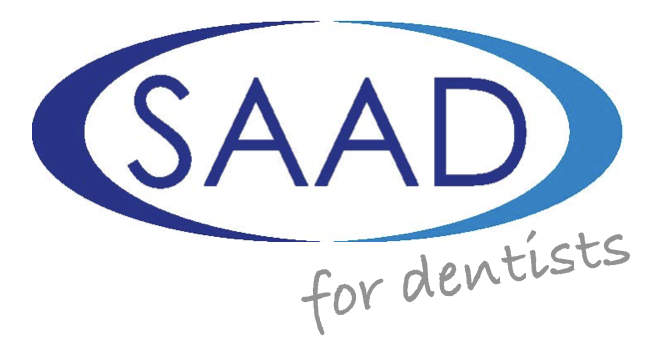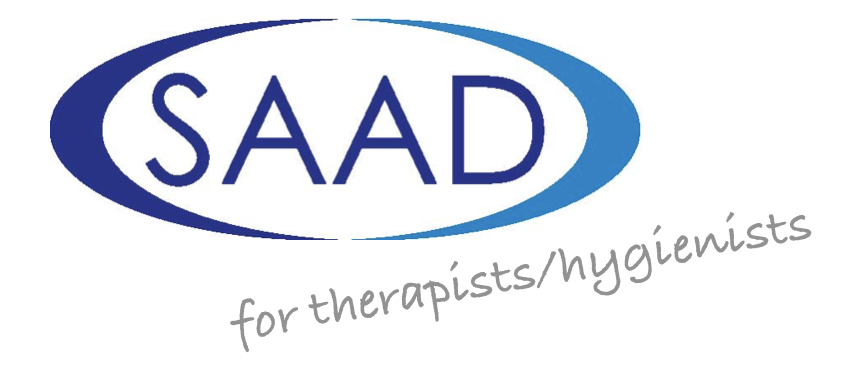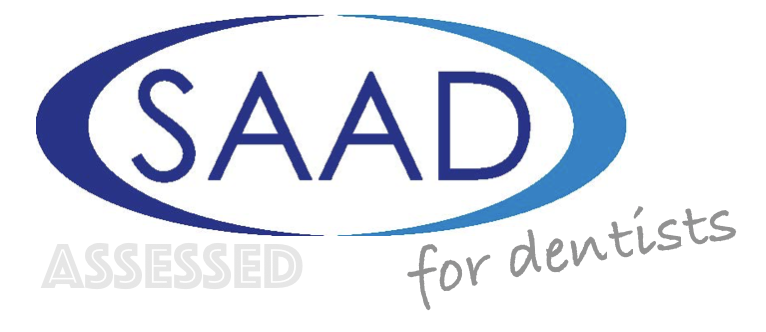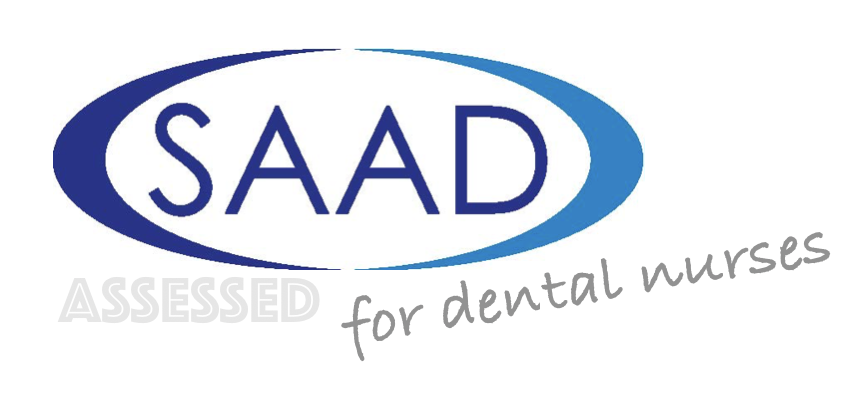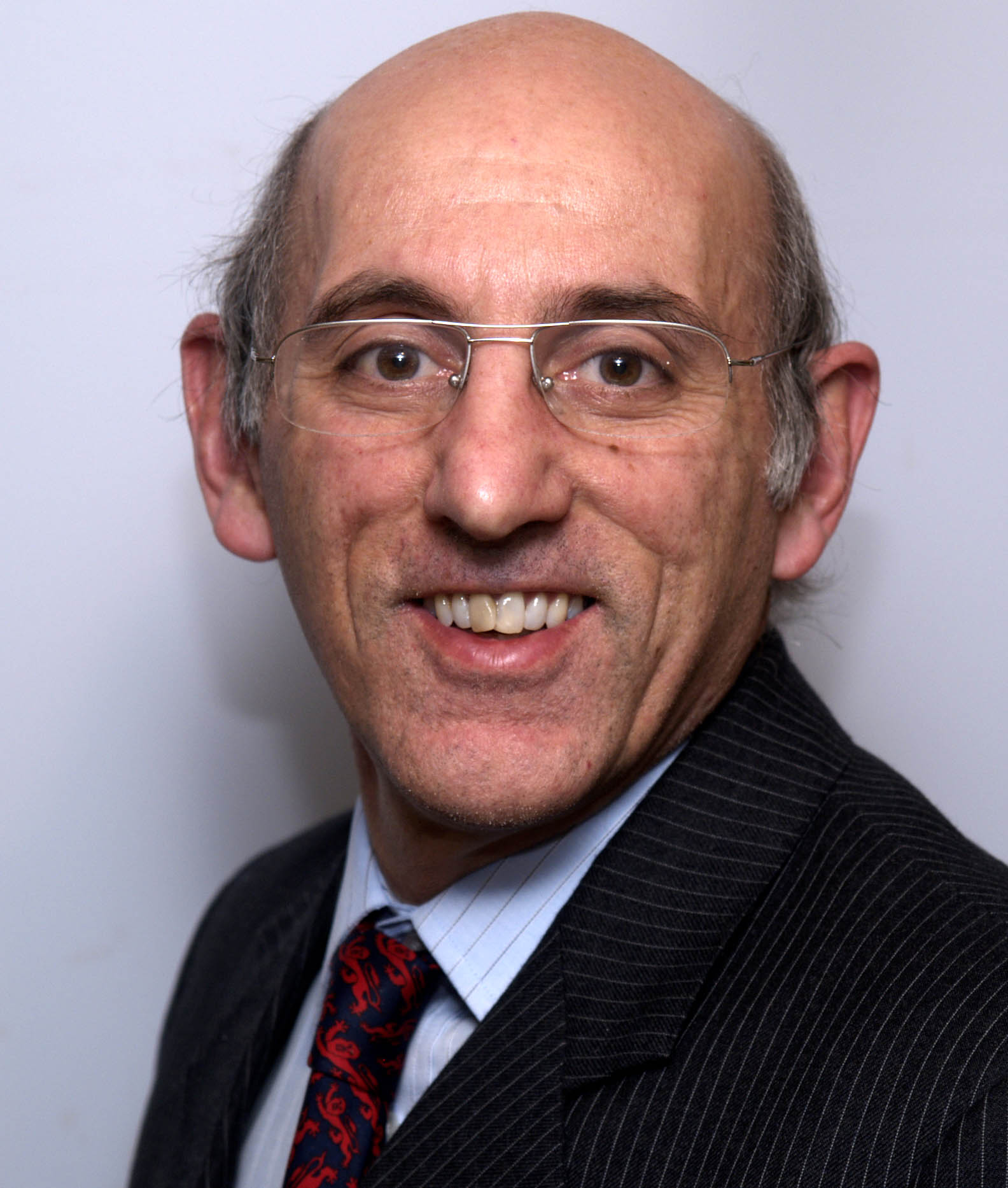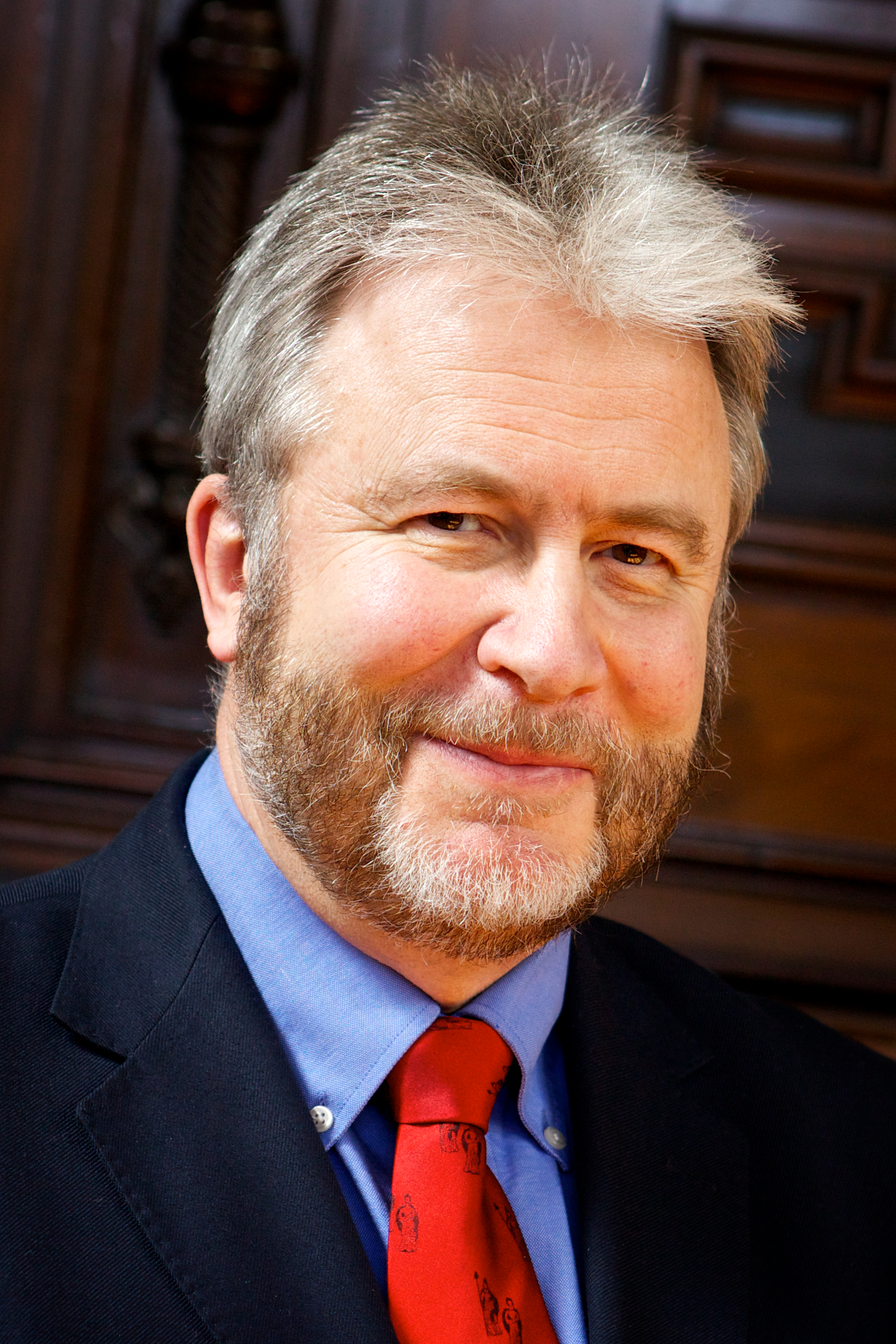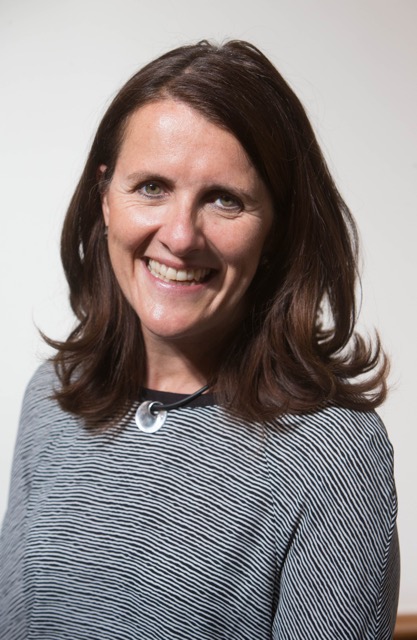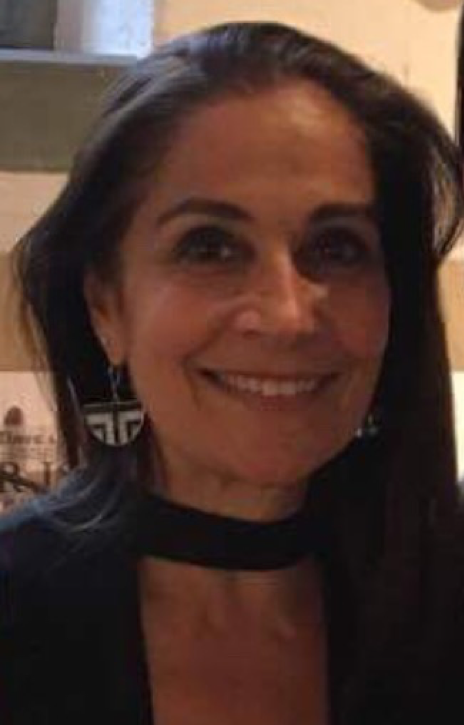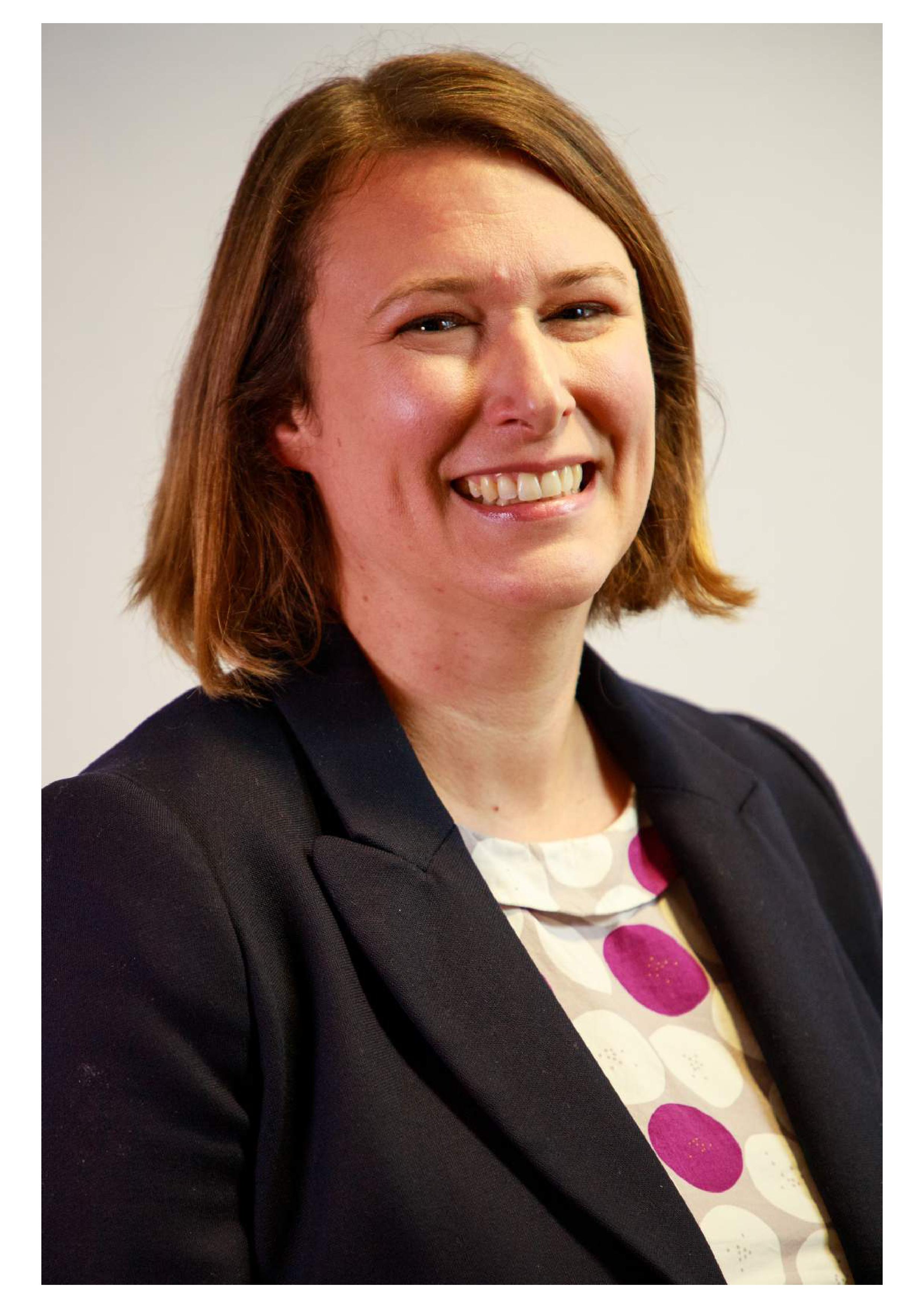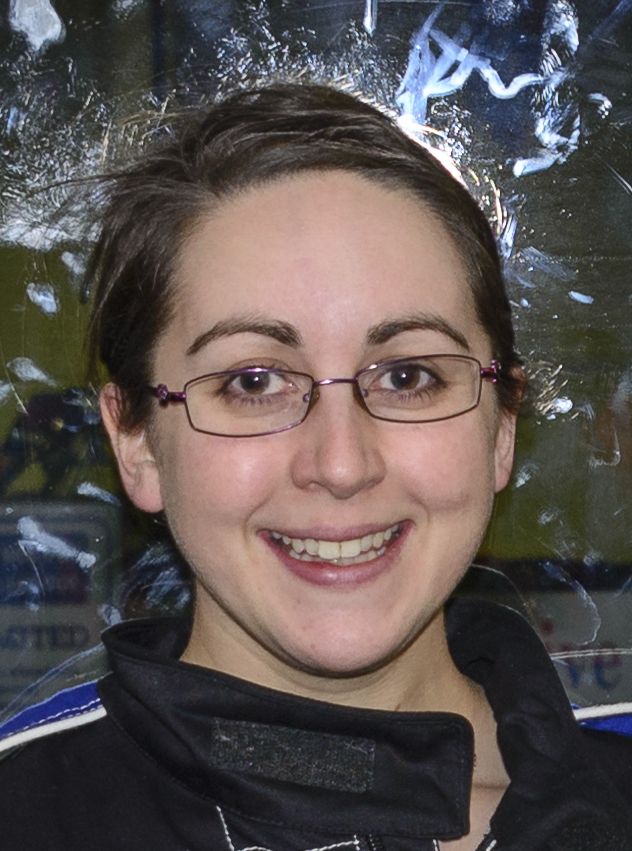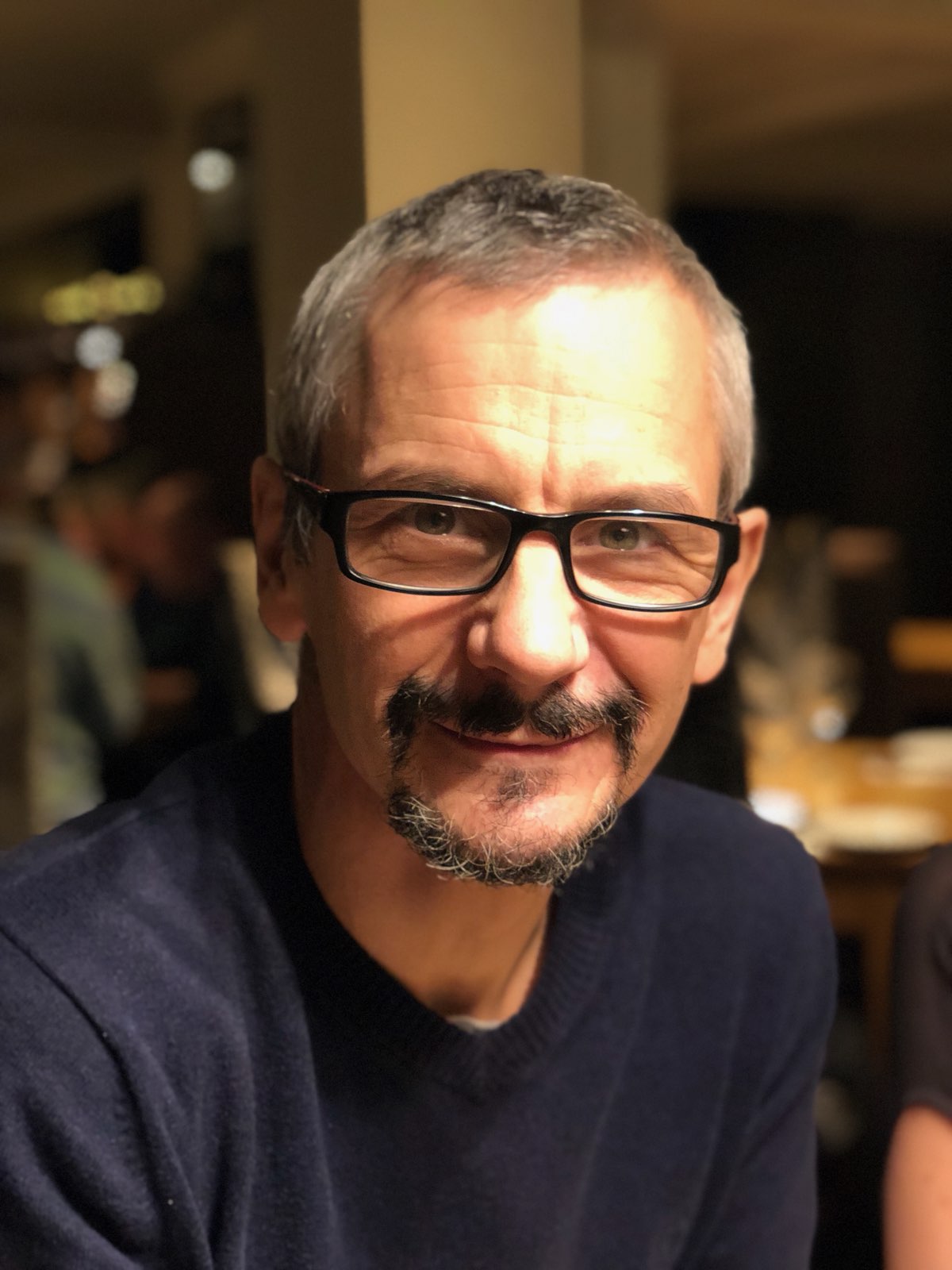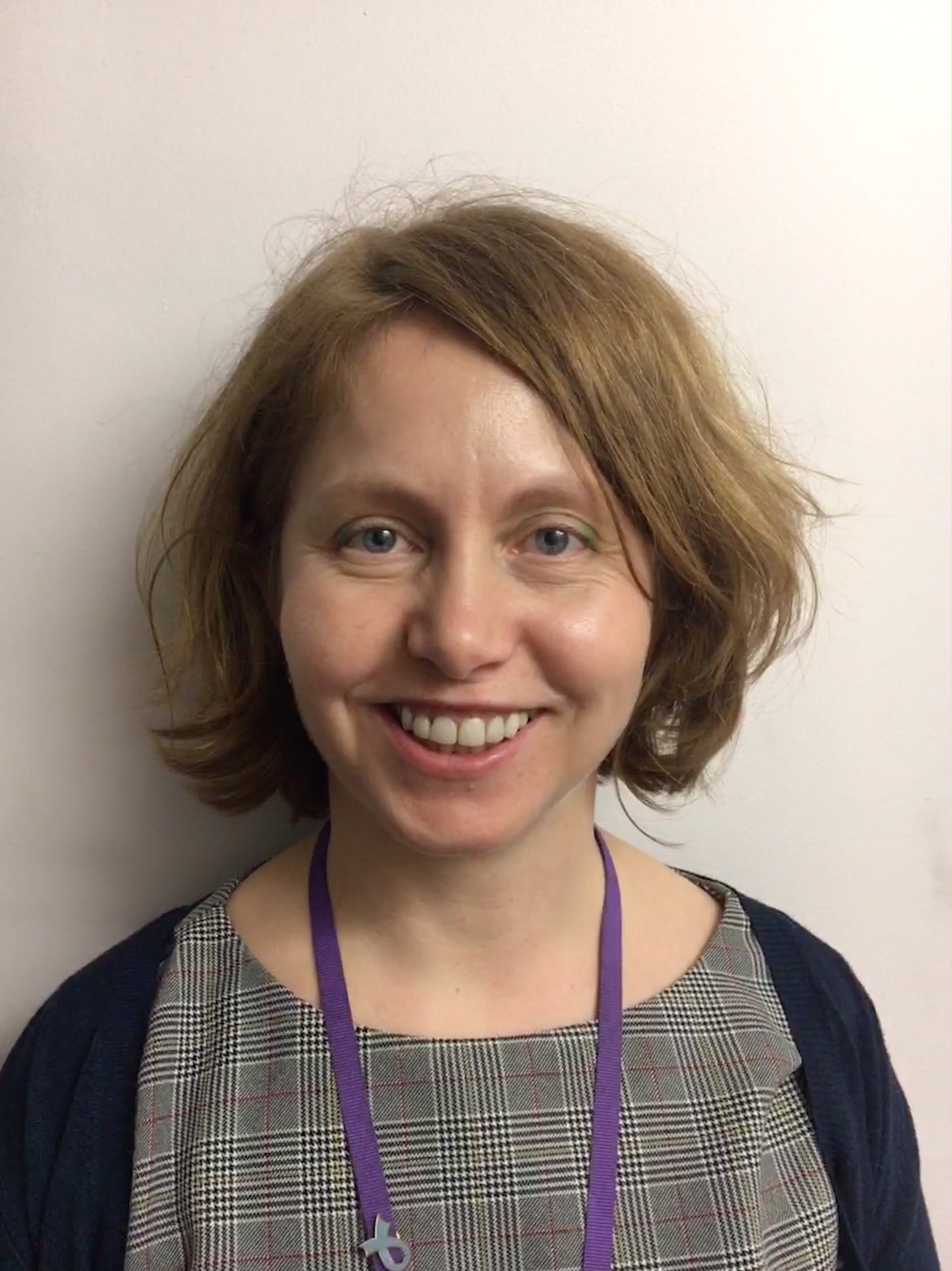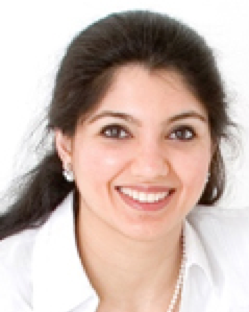The SAAD Digest
Guidance for authors
The SAAD Digest is the Journal of the Society for the Advancement of Anaesthesia in Dentistry and has been published regularly in London UK, since 1970. It has been produced in its current format since 2006. Two editions are published each year in March and September. Copies of all editions produced since then are available online from the Digest page on the SAAD website.
The Editorial Board are very keen to encourage contributions from interested authors who would like to add to the body of knowledge contained within its pages. We have striven hard over many years to make it increasingly more professional as well of course, more relevant and to become essential reading for all in the field, both in the UK and worldwide. We believe that Digest has become a unique and invaluable international forum for all interested in advancement of knowledge in pain and anxiety control for dentistry.
What potential contributors may not realise is that the team producing Digest is small and that a great deal of work takes place between receiving an article, its vetting by two independent peer reviewers, corresponding with the authors, proofing, and its final appearance in the Digest. Sadly, despite having encouraged all potential contributors to adhere to our guidelines, many excellent contributions are received showing considerable divergence from our desired format. This can result in the need for additional correspondence with author, extra work, delay and in some cases missing our publication date or possibly rejection.
So, this new revision endeavours to combine our previous documents into one in the hope that we can minimise the work required to convert your precious papers into our final publication format, benefitting the hard-pressed Editorial team, but also making it more likely that the Digest will appear within its hoped for publication window and containing your paper!
The stages
What are we looking for?
Stage One
We welcome research articles, reports of randomised controlled trials, articles derived from diploma dissertations, practice-related articles, education, professional opinion, case reports and general articles. If you are any doubt about the format or content of a proposed article please contact us before submission. It should be noted that articles are now only accepted in digital format and via email. It is a condition of acceptance of manuscripts that they are the work solely of the author or authors stated and that they have not been previously published elsewhere (either in print or electronic format) nor are they under consideration by any other periodical.
Manuscripts should meet the following criteria: they should be original, clearly written, relevant to dentistry, reader-orientated (in other words written to appeal to the readership of any interested in pain and anxiety control in dentistry) and designed to inform, add to discussion or debate, or entertain. Research papers should also have appropriate study methods, valid data and conclusions that are supported by the data.
Writing your contribution
Stage Two
Format
Manuscripts should be word-processed in Microsoft Word format and double- spaced with a margin of at least 4 cm on the left-hand side. The pages should be numbered consecutively with the numbers centred at the bottom of each page. The first page of the manuscript should give only the title of the article, and the author’s/authors’ name(s), qualifications and address(es) including email address(es).
Length
Contributions should be of no more than 3,000 words, to include tables and figures. Each table and figure will count as 100 words.
Case reports are welcomed, but should be of no more than 1,500 words in length. Case reports do not need to be scientific in nature. Please refer to the template for writing case reports.
Structure
- Titles must be descriptive of the contents of the article, but yet concise. Papers should be introduced with a short abstract which should be able to stand alone. The abstract should not contain references or abbreviations, and should be no longer than 200 words. The abstract will not contribute to the 3000 word limit.
-
Authors are required to submit three learning points to highlight key opinions, facts or themes from the article.
The key learning points should:
- Emphasise the educational value of the article to the reader
- Relate to the content of the body of the article
- Have a length no greater than a single sentence. - Data or tables may be submitted in Microsoft Excel format or embedded in the text of the Word document.
- Figures or images should be included in the text at their intended position and also submitted as separately attached and clearly labelled files in JPEG format at a high resolution of 300 dpi. Colour illustrations are preferred where possible. If the illustration is of a subject’s face, written consent for its publication must be obtained from the subject and attached with the article.
- Illustrations obtained from other sources such as books, or from colleagues, must again be accompanied by appropriate documentation indicating approval for their publication as part of the article from the copyright holder, or individual concerned.
- Units used in the manuscript must conform to the Système Internationale d’Unités (SI).
Generative Artificial Intelligence (AI)
Generative artificial intelligence (AI) may not be used to write your submission to the Digest. Some examples of generative AI products include ChatGPT, Microsoft CoPilot and Google Bard.
Author details
- Beneath the article head, authors should be given like this:
H. Devlin*1 and P. Giannini2 - NB: as shown in the example above, an asterisk should be used in the author listing beneath the article head to indicate the corresponding author. This should appear before the author affiliation number
- If there are more than two authors, they should be given like this:
H. Devlin,1 P. Giannini2 and B. Smith3 (assuming the authors are from different institutions) - If the authors come from the same institution, this should be indicated in the author listing beneath the article head as follows:
H. Devlin,1 P. Giannini1 and B. Smith1 - If an author comes from more than one institution, this should be indicated in the author listing beneath the article head as follows:
H. Devlin,1,2 P.Giannini1,3 and B. Smith2 - The author biog should be given like this:
1Senior Lecturer in Restorative Dentistry, The School of Dentistry, University of Manchester, Higher Cambridge Street, Manchester, M15 6FH;
2Assistant Professor, University of Nebraska Medical Center College of Dentistry
*Correspondence to: Dr Hugh Devlin
Email: hugh.devlin@man.ac.uk
General guidelines
- The Digest uses British spelling throughout, with a preference for ‘s’ rather than ‘z’, ie ‘specialised’ not ‘specialized’, ‘recognise’ not ‘recognize’, ‘sterilisation’ not ‘sterilization’. When adapting copy from US sources, for example from US press releases or a paper by US authors, all words in the text with American spellings must be changed to British, eg ‘behavior’ should be changed to ‘behaviour’, except where these form part of the referenced title of a publication
- There should be one space only after full stops, not two
- Quotation marks should always be single, not double, even when quoting speech
- Numbered or bulleted lists should be followed by a line space
- There should be no full stops at the end of the numbers/bullets except after the last point.
- As a general rule, terms such as ‘general dental practitioners’, ‘primary care trusts’ and other terms that are commonly abbreviated should not take capital letters when spelled out in full, unless in an official name. Paper authors in particular have a habit of adding capital first letters to terms that do not need them. Check that they are necessary when proofing and if in doubt, remove them!
- For Review articles where references are quoted, these should be in the form ‘Journal abbreviation year; volume: page range’. ALL Review articles featuring research from other journals should contain the full reference of the work in question. For more information on references, see the review section below.
Headlines
- The first word in all titles, headlines and subheads should begin with a capital letter but the words following should all be in lower case, except where official names or abbreviations are used, eg NHS, Staphylococcus aureus
- Headlines should not have full stops after them
- Where titles contain colons or dashes, the first word after the colon or dash should also be all lower case. The only punctuation mark within a headline or title that requires a capital letter after it is a full stop
- Subheading one must be one line in length only.
Abbreviations
- The abbreviations ‘eg’, ‘ie’ and ‘etc’ are written without dots
- Et al. is written in italics followed by a dot, even if another punctuation mark follows (eg ‘as discussed in the paper by Smith et al., periodontal disease has been found…’)
- Capital letter abbreviations are acceptable if the term is given in full when first mentioned, but should be restricted to generally recognised forms only
- Plurals should not contain apostrophes unless they are possessive, eg ‘the study analysed the opinions of 165 GDPs’; ‘the GDPs’ opinions were as follows…’
- Contractions (shortened forms which retain the final letter, eg Mr, Dr, Ltd) should be written without dots.
- Consistent with WHO guidance, please use COVID-19 if reference is made to the pandemic virus.
Italics
- Italics should be used for Latin and foreign words and phrases such as et al., in vivo, in vitro, en masse. (NB: ‘via’ should not be italic)
- Use italics for the names of publications including books and reports, eg British Dental Journal, The Times, The first five years
- Italics should also be used for Latin names of organisms (generic and specificnames), eg Streptococcus mutans, Staphylococcus aureus, Homo sapiens. These names should be spelled out in full at the first mention; subsequently the generic name can be abbreviated to the first capital followed by a full stop, eg S. mutans, S. aureus. If there could be ambiguity about the generic name, for example if these two microorganisms were mentioned in the same paper multiple times and the ‘S.’ could mean either Streptococcus or Staphylococcus to those unfamiliar with them, the names should be written in full or a longer abbreviation used, eg Staph. aureus, Strep. mutans
- Italics should be used for direct quotations from publications and from interviewees.
Numbers
- In general text, numbers should be spelled out up to and including ten and then numerals used for 11 onwards
- All numbers should be spelled out at the opening of a sentence unless they contain a decimal point.
- If a series of numbers are mentioned in a sentence, only one form should be used, ie either numerals or words, with a preference for numerals (eg ‘…aged 3, 7, 11 and 15 years’)
- Numerals should not be used for rounded numbers, eg ‘…over a thousand examples’; ‘a million denture wearers could gain relief’
- Millions should be written as ‘two million’ or ‘2 million’, not 2m
- Numerals should be used for quantities with units (eg 7 kg, 5 mA) and in reporting statistics (eg 7% of respondents). There should be a space between the number and the unit, except for percentages and molarity (eg 7%, 0.1M sodium chloride)
- Spaces should be included on either side of mathematical signs such as =, +, - etc EXCEPT for the symbols >, <, ≥ and ≤, which should have no space before the number, eg ‘p <0.05’
- Whole numbers greater than four digits should be grouped with commas, eg 1,000 10,000 100,000. No commas should appear after a decimal point, eg 0.0011 0.00011 0.000011.
Times and dates
- Dates should be written in the form ‘Friday, 20 April 2007’ and ‘Monday to Thursday, 23 to 26 April 2007
- Decades should be written as eg 1920s, not 1920’s or the twenties
- Centuries should be written as ‘the nineteenth century’ not the 19th century
- Years only may be written as 1976-9, 1979-81, 1909-18 when a range of years is mentioned. This only applies to years, and ranges such as 1897-1903 etc must be written in full
- Times should be written in the form 7 am, 7.30 pm.
Hyphenation
- Compound words may be hyphenated to aid understanding and avoid ambiguity
- Compound adjectives (eg size-dependent, caries-free, motor-assisted) should be hyphenated, especially when magnitude or degree is implied (eg full-time, long-term, high-density, low-fluoride)
- Care should be taken with dental terms such as maxillofacial, which should be written like this and not as maxillo-facial. If in doubt, check Dorland’s Medical Dictionary
- Consider particularly the use of hyphens when giving ages. The following forms should be used: 7 years old; 7-year-old children (children aged 7 years); 7 year-old children (7 children aged 1 year); 7-year-olds (children aged 7 years).
Figures, tables and boxes
- Figure, box table captions should be given as ‘Fig. 1’ with one space before the number and two following it (eg Fig. 1 Ulcerous lesions; Table 3 Demographic information, Box 1 List of questions)
- Captions and legends should not have full stops at the end of them. This applies also to figure captions in News and other articles
- Within the body text, figures should be referred to as ‘Figure 1’. When cited in the body text but in brackets, figures should be referred to as Fig. 1. For example: ‘As can be seen in Figure 1, the lesions appear black and mottled. After growth they become red (Fig. 2).’
- Tables should be referred to as Table 1 etc whether in brackets or not
- Boxes should be referred to as Box 2 etc whether in brackets or not
- Boxes should be used when a table or figures, consists of on ‘column’ of text, eg a list.
References
How to cite a reference in the text of your paper
The most important thing to note about references is that they should be as exact as possible. Readers should be able to find the work referred to easily by looking at the reference given. Many authors are not as precise and conscientious as they should be when compiling their reference lists. Ensure that references are correct, and please do try as far as possible to make sure that all the references in a list comply with our Guidelines for Authors. This may involve searching around on the internet for example to find the publisher name, location or year for a book, the correct publisher and date for a government report, or to verify that a reference to a paper is correct. Authors are advised not to submit items for consideration until this has been done! Items so submitted will be returned for correction, without a decision being indicated on possible publication. Copy accepted for publication in the Digest must be in a ready-to-publish state.
- Reference numbers in text always FOLLOW punctuation, like this.1 Also like this,2 this;3 but not (like this)4
- Please follow the full description of the Digest reference styles given below. Particular points to note:
- For references with up to AND INCLUDING six authors, all author names should be given. References with more than six authors should give the first three authors followed by et al. NB: Paper authors sometimes just give one author followed by et al. This is incorrect and the additional names must be added
- For edited books, editors should be indicated by the term (ed) or (eds) after their name(s) [note no capital E!]. Second or third (or fifth etc) editions of books should be indicated by the phrase 2nd ed., 5th ed. etc, NOT eg 3rd edn.
- For references to websites or online documents, the URL provided should be checked to make sure it still works. For websites, the name of the site should be given followed by the URL and if provided by the authors, the date the site was accessed. For online documents and reports, make sure that the authors are still listed if any are given; in this case the format should be much like that for a book or report: Authors. Title. Date. URL. Access date (if available)
- Please note that Digest style uses the official abbreviations of journal titles and these are not always correctly given by authors. When checking reference lists, please double-check that the journal abbreviations are correct. They may be checked using PubMed, available at http://www.ncbi.nlm.nih.gov/sites/entrez?db=pubmed. To do this, you can type the full journal name into the search box. This will bring up a listing of the articles for this journal; the correct abbreviation is given at the bottom of the reference. Alternatively, on the PubMed homepage you can click the ‘Journals in NCBI Databases’ link under the More Resources list. This will take you through to the NLM Catalog journals search page, by typing the full name into the search box, PubMed will search its journals database and bring up the listing for this journal and any similar ones. The official abbreviation is given in the ‘NLM Title Abbreviation’ field of the journal of interest.
- References must be in the Vancouver style. They should be numbered in the order in which they appear in the text. The numbers should be inserted as superscripts each time the author is cited (Robb3-5 reported similar findings). Other references to the paper should be given in the same way after punctuation (Other studies have shown this to be true.4,5 Drummond-Jackson et al.6 demonstrated...)
- The authors' names must be followed by the title of the article; the title of the journal abbreviated according to Index Medicus and Index to Dental Literature style; year of publication; volume number; and the first and last page numbers in full.
- Titles of books should be followed by the place of publication, publisher, and the year.
- Where available, Digital Object Identifiers (DOIs) should be included at the end of each reference.
If this reference citation style is not followed exactly, especially in relation to punctuation and spacing, the manuscript will be returned without review.
Examples of reference styles to be used at the end of your paper
Reference to an article
1. Molar L R, Fang-Jones Q, Jaw U. Are Teeth biting back?. Br Dent J 2006; 200: 144-146.
Reference to a book
2. Craig D C, Skelly A M. Practical Conscious Sedation. 1st ed. London: Quintessence, 2004
Reference to a book chapter
3. Robb N D. Conscious sedation in Dentistry. In Heasman PA (ed) Master Dentistry. Vol. 2; Restorative Dentistry, Paediatric Dentistry and Orthodontics. pp 149-168. Edinburgh: Churchill Livingstone, 2003.
Reference to a report
4. Re-accreditation and re-certification for the dental profession. London: General Dental Council, 1997.
Reference to a webpage
5. General Dental Council. Scope of practice. 2009. Online information available at www.gdc- uk.org/Newsandpublications/Publications/Publications/ScopeofpracticeApril20 09[1].pdf (accessed April 2012).
The author/principal author is responsible for the accuracy of the reference list.
Acknowledgements
These should be grouped in a paragraph at the end of the text before the references. Permission and approval of the wording must be obtained from the person(s) thanked. Where any research project was supported by industry, this should be acknowledged in a covering letter to the Editor on submission of the manuscript.
Declaration of interests
Author(s) must ensure that they declare any possible conflicts of interest in their paper. This includes matters such as: direct funding from an organisation or company for the research; funding received (or payment in kind) for any related work carried out from an organisation or company that could be linked to the research; consultation or advisory positions held in an organisation or company involved in the research or an organisation involved in similar research; any other situation that could be construed as a conflict of interest.
Ethics
Articles reporting clinical research must include a statement indicating that appropriate Ethical Committee approval has been granted.
Copyright
Upon acceptance for publication in SAAD Digest, it is assumed that the author(s) assign(s) copyright of the article to the Society for the Advancement of Anaesthesia in Dentistry. Single copies of the published article for personal study may be made free of charge but multiple copies will require permission of the Editor prior to production.
updated 26.08.2022. FT
When and how to send your contribution
Stage Three
We publish two Digests each year in March and September, and welcome articles submitted at any time. The deadline for the March volume is 30 June and the deadline for the September volume is 31 December. Articles submitted after these deadlines will be considered during the next submission period.
Manuscripts may only be submitted by email to digest@saad.org.uk.
Authors should note that submitted papers not fully conforming to these ‘Authors Guidelines’, especially in terms of length and manuscript format, will be returned for correction without consideration or peer review, and in such cases publication might well be delayed or subsequently declined.
Before you submit your article therefore, we strongly suggest you ask at least one person not involved in its production to read it both for content, and at the same time asking them to check it for proofing errors. Then PLEASE check yourself that it really is as close as possible finished in the format we have detailed above before emailing it to us.
If in doubt please look at past recent copies of the Digest available here as they will demonstrate exactly what we’d like to receive!
What happens next?
Stage Four
Manuscripts are generally processed as they are received and it is expected that your submission will be acknowledged by the Digest facilitator soon after receipt, with a reference number allotted for future correspondence.
Authors should note that submitted papers not fully conforming to our guidance as given here, especially in terms of length and manuscript format, will be returned for correction without consideration or peer review, and in such cases publication might well be delayed or subsequently declined. Peer review is carried out by at least two anonymous referees, and the Chairman of the Editorial Board. Additional statistical advice may be sought if required.
Authors will be advised as soon as possible, that either their paper….
1. is suitable for publication without amendment,
2. is suitable for publication with some amendments,
3. may be suitable but requires major rewriting,
4. is rejected.
In any case, authors will receive the anonymous structured feedback of the reviewers from the facilitator advising them of the decision level as above, and the action (if any) to be taken before resubmission. Delays in action on such advice may cause publication delay or even rejection if the publication deadlines are missed.
Once a manuscript is accepted for publication, authors will be advised whether their paper is to be published in the next issue or is, at the discretion of the Editorial Board, to be held for the following issue in order to obtain the appropriate balance for each edition. For similar reasons, in some cases the final decision on acceptance may be delayed. All decisions to publish are at the discretion of the Editorial Board alone whose decision is final.
The principal author of a manuscript accepted for publication will later be e-mailed a pdf version of their article for final proofing. Any errors identified and requiring correction must be notified by email without delay, and at the latest within one week. No revision of the wording or other change, other than correction of proofing errors, will be allowed at this stage.
Got a question?
If you have any questions, or need some clarification please contact us!
| Contact us |
We'd welcome your feedback
Please take a moment to let us have your thoughts on the guidance we have provided.
| Please enter your feedback |
Content
Features
Location
Portfolio
Pricing
Products
Showcase
Title Text
Title Text
Title Text
Title Text
Title Text
Title Text
Title Text
Title Text
Title Text
Title Text
Testimonials
The scheme is a quality assurance programme for implementing national standards in conscious sedation the UK
Links to the forms and documents:
The SAAD Safe Sedation Practice Scheme document
The SAAD Safe Sedation Practice Scheme
-
Staff list
Download the template in Excel
-
Staff Training and Experience form - dentists and sedationists
-
Staff Training and Experience form - dental nurses
-
Documents can be scanned and emailed to fiona@saad.org.uk, or photocopies and posted to:
SAAD (at HGE Ltd)
Hay Green Corner
Fishlake
Doncaster
DN7 5LA
Please contact Fiona at fiona@saad.org.uk or on 01302 846 149 with any questions about the evaluation.
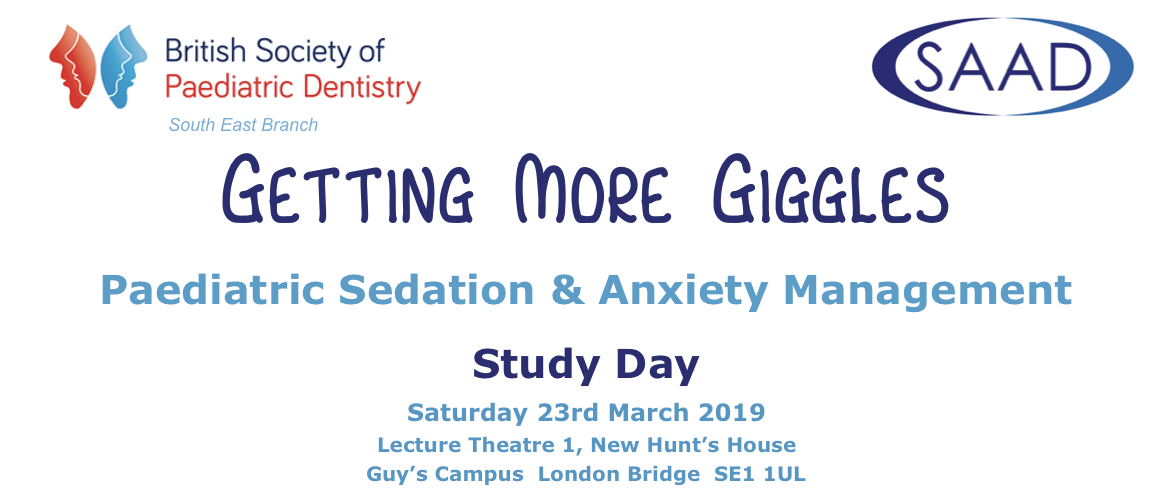
| 09:00 | Registration and Refreshments | ||
| 09:50 | Welcome to the Study Day | Yi Kwan Loo | |
|
Dr Yi Kwan Loo BDS MFDS RCS (Edin) DipConSed AFHEA Yi is Deputy Sedation Lead in the Paediatric Department at King’s College Dental Institute. She has a background providing basic and advanced adult and paediatric sedation in NHS and private practice, community and hospital settings and has experience teaching sedation and paediatric dentistry at undergraduate and postgraduate levels. She is a SAAD Trustee and part of the SAAD Teaching Faculty and Editorial Board. Yi is currently a Paediatric Specialty Registrar based at King’s College Dental Institute and Kent Community Health Foundation Trust and is a member of the BSPD SE Branch committee.
|
|||
| 09:55 | Introduction from the SAAD President | Steve Jones |
|
|
Dr Steve Jones BDS MSc DDPH Diploma in Dental Sedation and Pain Control Clinical Lead for Dental Sedation, University of Central Lancashire (UCLAN) Upon graduation, general dental practice was entered where inhalation sedation and intravenous techniques were developed further to attendance at SAAD National Courses. Four years later a career in the community dental service commenced culminating in the appointment as Clinical Director of the Trust-based service throughout Cumbria from 1997 to 2017. Clinical responsibilities focussed on the delivery of care to highly anxious and phobic patients using the full range of basic sedation techniques. After retirement in 2017, a part-time role commenced with the University of Central Lancashire (UCLAN) as Clinical Lead for Dental Sedation with a particular responsibility for the introduction and development of dental sedation to dental students, dental hygienists & therapists and also to clinical tutors who supervise those on undergraduate programmes.
|
|||
| 10:00 | Putting the Buzz into Paediatric Sedation: to Infinity and Beyond | Richard Welbury | |
|
Professor Richard Welbury MBBS BDS PhD FDSRCS FDSRCPS FRCPCH Hon FFGDP Professor / Hon. Consultant in Paediatric Dentistry. University of Central Lancashire, and Cumbria Foundation NHS Trust. Richard Welbury graduated dentistry (1978), medicine (1984), PhD (1989) and appointed Consultant/Senior Lecturer in Newcastle (1991). Between 2001- 2015 he was Professor of Paediatric Dentistry/Director of PG Education in Glasgow. In November 2015 he joined the University of Central Lancashire as Professor and Hon. Consultant. Richard was previously Chair of the SAC, Chair of the Bi-Collegiate MPaed Dent Board, Intercollegiate Exit Fellowship Examiner and Board member and a Training Programme Director for 15 years. He has published over 200 scientific articles, 12 book chapters and is a co-author of six textbooks. Richard was Secretary (1991-94) and President BSPD (2001-2002), President of the European Academy of Paediatric Dentistry (2006-2008) and Dean of the Dental Faculty of the Royal College of Physicians and Surgeons of Glasgow (2013-2016).
Learning Outcomes:
Abstract: Fear and anxiety about dental treatment in children may lead to uncooperative behaviour and management problems for the dentist. Not only can this be very challenging for the dentist and a barrier to successful dental treatment for children but it can result in children’s tooth decay going untreated or at the very least treated late with perhaps a poorer outcome. Sedation can be used to relieve anxiety and manage challenging behaviour in children undergoing dental treatment. We must regularly reflect and reassess from published research which agents, dosages and regimens are most effective. At the moment there is not a great volume of evidence of sufficient quality to satisfy the rigours of a Cochrane Review. If we want to provide the best for our young patients then we need to push for further well designed and well reported clinical trials to evaluate the variety of sedation agents. Currently there is some moderate quality evidence that oral midazolam is an effective sedative agent for children undergoing dental treatment. Perhaps in the future we should be advocating research that compares experimental regimens with oral midazolam or inhaled nitrous oxide. |
|||
| 10:20 | That Happy Air Stuff | Clare Ledingham | |
|
Dr Clare Ledingham BDS MSc (Paed Dentistry) PhD Specialist Registration in Paediatric Dentistry MFDS RCPS Glasgow Specialist Paediatric Dentist, Mersey Care NHS Foundation Trust Chair, Cheshire and Merseyside Paediatric Dentistry Managed Clinical network Hon. Secretary BSPD
Clare is a Specialist Paediatric Dentist working in the Community Dental Service in Liverpool.She qualified from the University of Bristol Dental School and completed a Masters in Paediatric Dentistry at the Eastman Dental Hospital, University of London, before going on to obtain her PhD at the University of Liverpool. She has had experience of community, hospital and academic dentistry and has, for most of her career, been an active member of the British Society of Paediatric Dentistry (BSPD), both at local and national level and for whom she is now Honorary National Secretary. She was a member of the steering group for the development of the NHS England Commissioning Standards for Paediatric Dentistry and is also on the Public Health England Child Oral Health Improvement Programme Board. She was also invited to be the BSPD representative on the SDCEP Guideline Development Group for Dental Sedation. Clare's clinical work involves treating child patients referred from General Dental Practitioners, most of whom require treatment under general anaesthetic or inhalation sedation.
Learning Outcomes:
Abstract : To follow
|
|||
| 11:05 | Morning Refreshments | ||
| 11:35 |
Intravenous Sedation in Paediatric Dentistry |
Liege Matharu |
|
|
Dr Liege Matharu BDS MSc MClinDent DipSed Retired Associate Specialist in Paediatric Dentistry at King's College Hospital, UCLH and Weymouth Practice Liege qualified in 1982 in Brazil. She completed a Master degree in Oral Medicine and a Clinical Master degree in Paediatric Dentistry at the Eastman Dental Institute. She obtained Membership of the Faculty of Dental Surgeons of The Royal College of Surgeons (Eng) and a Diploma in Sedation from Guy’s Hospital. She was the Chair for the British Society of Paediatric Dentistry (BSPD), South East Branch 2009-2010.
Learning Outcomes:
Abstract: Fear, behavioural problems and dental anxiety may create barriers for young adults who need dental treatment. The first strategy to managing these patients is behaviour management followed by standard sedation with nitrous oxide. However, some young patients may still require treatment under general anaesthesia. To avoid this, intravenous sedation with midazolam may be an alternative, although the practice of IV sedation in Paediatric Dentistry is still in its infant stage. The current guidelines have had an impact on the use of midazolam sedation for children under 12 years of age. Evidence based studies are necessary to help future guidelines regarding midazolam sedation in Paediatric Dentistry |
|||
| 12:20 | Training and Accreditation in Sedation for Paediatric Dentists |
David Craig |
|
|
Dr David Craig MBE FDS RCSEd Consultant, Honorary Senior Lecturer, Head of Sedation & Special Care Dentistry at Guy’s & St Thomas’ NHS Foundation Trust, King’s College London Dental Institute and Visiting Professor at the University of Portsmouth. David has over 30 years’ experience teaching conscious sedation techniques to undergraduate students, dental and medical practitioners and has served on dental and multidisciplinary groups preparing guidelines for safe sedationpractice. He has held substantive appointments in oral surgery, anaesthesia and primary dental care
Learning Outcomes:
‘Where conscious sedation is provided, all members of the care team must have undertaken appropriate and validated education and training and have demonstrated an acceptable level of competence by means of a robust assessment process’. (NHS England, 2017) This presentation will explain the rationale behind the Intercollegiate Advisory Committee for Sedation in Dentistry (IACSD, 2015) recommendations on training and differentiate the requirements for ‘Basic’ and ‘Advanced’ techniques for paediatric patients in Primary and Secondary care settings. Current training options for dentists and DCPs and the role of the Sedation Training Accreditation Committee (STAC) will be outlined |
|||
| 12:50 | Question Session | Janet Davies | |
|
Dr Janet Davies BSc (Hons) BDS PGCert PhD MPaed Dent (RCS) FDS Paed Dent (RCS) FHEA After qualifying from Bristol University in 2000, Janet worked in Plymouth and Cardiff before starting her academic training at the Royal London Hospital. Janet currently works as a Clinical Senior Lecturer/ Hon. Consultant in Paediatric Dentistry at Barts. and The London School of Medicine and Dentistry, Queen Mary University of London. Janet is current chair of the BSPD South East branch and her sedation interests include education and training (particularly at post graduate level) and the role of dental therapists in providing paediatric sedation.
|
|||
| 13:00 | Lunch | ||
| 14:00 | Hypnotic Technique With and Without Trance | Charlotte Davies | |
|
Dr Charlotte Davies BChB FRCEM MEd Consultant in Emergency Medicine Charlotte is an EM Consultant, with a special interest in hypnosis. To develop this interest, Charlotte is on the council of the British Society of Academic and Clinical Hypnosis (BSCAH). Charlotte is also interested in how professionals can use hypnotic techniques to assist them in their work - as Charlotte believes many of them do this without realising. Charlotte has completed BSCAH foundation training, and regularly attend hypnosis CPD events, as well as medical CPD events.
Learning Outcomes:
Abstract: Hypnosis is a technique that many providers use with or without realising it. By becoming increasingly aware of the words we use, and other techniques, hypnosis can be useful in all patients - with, or without trance. |
|||
| 14:30 | Children with Dental Fear and Behaviour Management Problems: New Directions |
Tim Newton & Geanina Bruj |
|
|
Professor Tim Newton BDS MSc MFDS DSCD Professor King’s College London Dental Institute Tim Newton is Professor and Consultant in Psychology as Applied to Dentistry at King’s College London Dental Institute. He is also Honorary Consultant Health Psychologist to the Office of the Chief Dental Officer (England) and an Honorary Professor at University College London. An IADR distinguished scientist, he is a world authority on the application of psychological theory in dentistry. His particular interests include the management of dental anxiety and interventions to enhance oral health related behaviour.
Geanina Bruj Clinical Nurse Specialist, Dental Health Psychology Team at Guy’s & St Thomas’s NHS Foundation Trust Geanina is a Clinical Nurse Specialist working within the Dental Health Psychology team at Guy’s & St Thomas’s NHS Foundation Trust, providing Cognitive Behaviour Therapy for patients with dental phobia and other dental-related issues. Bringing her clinical experience about dentistry to the group, Geanina undertakes work with patients who are dentally phobic, those with a hypersensitive gag reflex and individuals with ongoing facial pain. Having previously worked in specialist paediatric dentistry settings, Geanina is particularly interested in graded exposure based methods for managing dental fear in children and young adults. She is a qualified sedation dental nurse and currently, is doing her Masters in Health Psychology.
Abstract: Cognitive Behaviour Therapy (CBT) is a powerful, evidence based technique for helping children and adults to overcome fear and its behavioural manifestations. The core of the approach with respect to fear is the use of graded exposure to reduce avoidance of the feared stimulus, and to learn a more helpful range of coping behaviours in the presence of the feared object. On a practical level this requires the collaboration of dental teams and therapists trained in the techniques of CBT. In this talk we will outline our approach to implementing CBT for dental phobia in children and young people based around four key areas: the creation of a warm and welcoming environment conducive to co-operation; building rapport and trust; teaching coping skills; and rewarding the child’s effort in overcoming their fear.
|
|||
| 15:15 |
Setting up a Paediatric Sedation Practice Practical Tips from a Paediatric Dentist |
Prabhleen Anand |
|
|
Dr Prabhleen Anand BDS IQE MMedSc FDSRCS(Eng) MPaedDent FDS(Paed Dent) Consultant in Paediatric Dentistry and Specialist in Oral Surgery Prabhleen Anand qualified in 1996. She completed an MMedSc in Oral Surgery from Queens University, Belfast in 1998. She was awarded a Fellowship in Dental Surgery from the Royal College of Surgeons, England in 1999. She entered the Specialist list in Surgical Dentistry in 2002. She sought a further specialisation in Paediatric Dentistry at Guys Hospital, London and completed her Specialist Registrar training to be awarded a Membership in Paediatric Dentistry at the Royal College of Surgeons, England. She entered the specialist list in Paediatric Dentistry and got her Certificate of Completion of Specialist Training in Paediatric Dentistry in 2003. In 2006 she was awarded a Fellowship in Paediatric Dentistry at the Royal College of Surgeons, England. Prabhleen is currently a Consultant and Honorary Senior Lecturer and Clinical Lead in Paediatric Dentistry at The Eastman Dental Hospital, University College Hospitals NHS Trust, London. Her areas of special interest are sedation, pain control, oral surgery, trauma and general anaesthesia. She set up an IV sedation service in the Paediatric dental department in 2008 at the Eastman Dental Hospital, which has been successfully running for 10 years now. She is the lead on IV sedation in the department. She also carries out private dental care for children and is familiar with practice settings too.
Learning Outcomes:
Abstract: Sedation is an adjunct to carrying out dental treatment for anxious children. For those that treat children in the primary, secondary or tertiary care environments, will know that sedation is a practice builder and an invaluable tool to help this cohort of patients and could help avoid a general anaesthetic where possible too. We look at how to choose patients for the different settings we work in and how to set up a safe sedation practice for children. Some tips are provided that are useful to ensure governance around sedation is maintained. Staff helping with sedation should be properly trained to deliver sedation in practice and we will briefly look at this to ensure you have the right support for your setting. There will also be some practical tips on equipment you will need for assessment and treatment. Finally a paediatric sedation pathway will also be looked at to help summarise how it could practically work for those planning to set up a paediatric sedation service.
|
|||
| 15:55 | Question Session & Close of Study Day | Janet Davies | |
| 16:10 | Close | ||
Safe Journey Home!We look forward to seeing you at:
BSPD SE Branch Members Papers & AGM Tuesday 14th May 2019 Weston House, Great Ormond Street
SAAD Symposium Saturday 28th September 2019 The Bridgewater Hall, Manchester |
|||
SAAD & BPSD SE Branch reserve the right to make adjustments to this programme. |
|||
